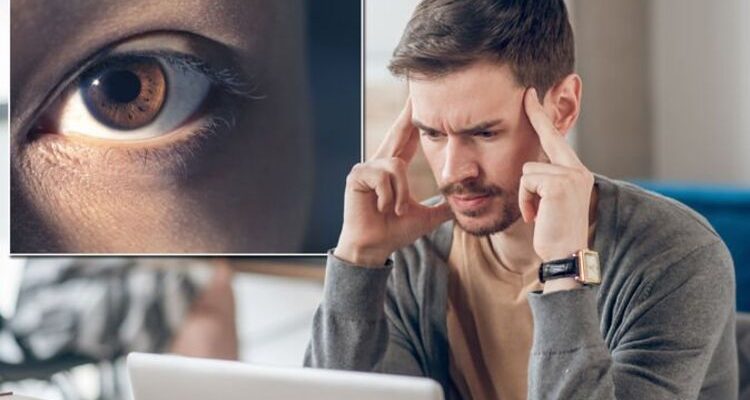BBC's Tim Davie says action is taken on social media breaches
We use your sign-up to provide content in ways you’ve consented to and to improve our understanding of you. This may include adverts from us and 3rd parties based on our understanding. You can unsubscribe at any time. More info
With the rise of portable computers, from devices that weighed as much as a pile of bricks to the glass wonders that slip with ease into our pockets, more interest has been taken by the medicinal community in the impact these devices have on our lives.
Of late, a lot of work has gone into investigating and understanding the impact of social media on mental wellbeing and how these devices affect the behaviour of youth.
However, 24 years ago, in 1998 doctors coined the term Computer Vision Syndrome, or CVS for short.
It was used to describe the impact of computer screens on the eyes.

Computer vision syndrome causes the eyes to feel strained, dry, and tired.
Other symptoms of CVS are headaches, blurred vision, dry eye, discomfort, and redness in the eyes.
These symptoms are “easily treated and managed [and] there is no evidence that the syndrome causes long-term sight problems,” says Optical Express.
Treatments for CVS include laser eye surgery, glasses, and contact lenses.
However, a cheaper alternative is an exercise known as the 20-20-20 rule.
This involves taking a break from looking at a screen every 20 minutes to look at an object 20 feet away for 20 seconds.
Or in other words taking a break from looking at a screen every 20 minutes to look at an object six metres or six and a half yards away for 20 seconds.
Should a person prefer the alternative measurements this could best be described as the 20-6-20 rule.

The NHS has a number of tips to help someone look after their eyes.
These include quitting smoking and protecting eyes from the sun.
Some individuals are also at greater risk of developing eye conditions than others.
Those older than 60, from certain ethnic groups, with a learning disability, or someone who comes from a family with a history of eye disease are at greater risk.

More information about how to maintain eye health is available via the College of Optometrists online.
Meanwhile, the key message with screen time in the modern era is to take breaks often in order to allow the eyes to recover.
If one’s eyesight gets progressively worse, spectacles or contact lenses may be required.
For more information on this, consult an optician.
Source: Read Full Article
